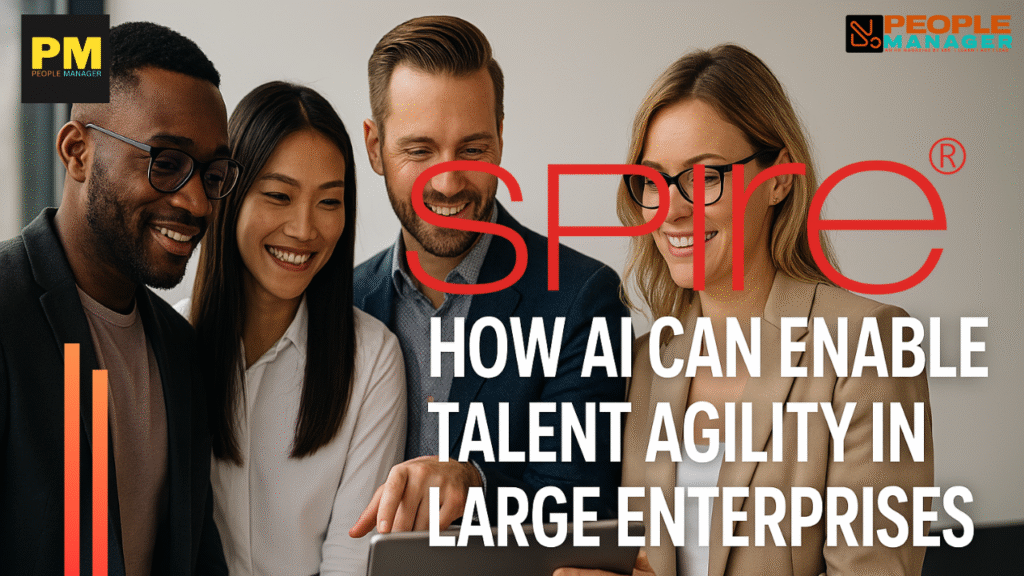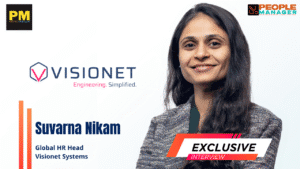How AI Can Enable Talent Agility in Large Enterprises
Reimagining Workforce Strategy in the Age of Intelligence
Let’s be clear: agility isn’t a buzzword. It’s a boardroom imperative.

In today’s landscape, your organization’s ability to sense, respond, and reconfigure its workforce in real time is what determines whether it leads—or lags. Markets shift. Technologies advance. Talent expectations evolve. The pace of change doesn’t wait for annual planning cycles. And it certainly doesn’t pause for org charts.
If your enterprise still treats talent as static—locked into roles, boxed into functions, or waiting for the next reorg to move—it’s not just inefficient. It’s vulnerable.
The companies that stay competitive are reengineering how they see, shape, and activate their people. Not with more process. Not with more layers. But with more intelligence.
This is where AI earns its seat at the table.
What Talent Agility Really Means
Talent agility isn’t HR jargon. It’s your organization’s muscle memory—the ability to flex the right capabilities, at the right time, in the right direction.
It’s not just about filling roles faster or encouraging internal movement. It’s about building an operating model where workforce capability evolves as fast as business demand. Where you don’t chase gaps—you anticipate them. Where you don’t just deploy talent—you design for adaptability.
That means visibility into your skills. Fluidity across teams. Personalized development that closes real gaps, not theoretical ones. And decisions grounded in data, not just instinct.
This is not a theory. It’s infrastructure.
The Systems Holding You Back
Legacy systems weren’t built for this.
Your HRIS is structured around static jobs. Your ATS is keyword-based. Your LMS pushes content, but rarely aligns with real-world demand. Data lives in silos. Skills are manually tagged or self-declared. And the result? A fragmented view of your most critical asset—your people.
You can’t drive strategy with a rearview mirror.
And yet, most workforce planning still relies on past headcount, outdated competencies, and spreadsheets stitched together under pressure.
The gap between business needs and talent strategy doesn’t happen by accident. It happens by design. And it’s time to redesign.
The Role of AI: Intelligence Meets Intent
AI doesn’t replace your people. It reveals their potential.
Done right, AI gives your talent systems a spine—one that connects hiring, development, deployment, and planning through a single language: skills. It makes your organization legible. It makes your decisions faster. And it turns disconnected activity into orchestrated movement.
Here’s what that looks like when you build for scale.
1. Building a Living Map of Skills
Static skills matrices won’t get you far. They’re outdated before they’re implemented. AI changes this by scanning across resumes, projects, performance data, and learning histories to dynamically infer the capabilities your workforce holds—and the ones it’s on the cusp of developing.
No guesswork. No gaps. Just a living, breathing map of what your enterprise can actually do.
That insight is power:
- Power to deploy faster
- Power to spot potential earlier
- Power to build, not just buy, your future talent
2. Visibility That Drives Action
Once you know your skills, you can see your workforce in a new light.
AI brings transparency to the table—surfacing the right people for the right opportunities, mapping readiness across geographies, and making capability visible at the team, function, and enterprise levels.
It’s not about dashboards for the sake of dashboards. It’s about decisions that are faster, sharper, and better aligned with the road ahead.
And when people know they’re seen—really seen—engagement follows.
For a deeper look at how organizations can enable this kind of planning intelligence, explore spire.ai/use-cases/workforce-planning
3. Precision in Learning and Growth
Generic development plans don’t move the needle. AI brings precision.
It recommends the right course, the right project, the right mentor—based on real skill gaps, not assumptions. It personalizes learning journeys, aligns them to business priorities, and empowers employees to grow in ways that matter.
This isn’t a content strategy. It’s a capability strategy.
And when people can see the path to what’s next—and know it’s within reach—you’ve already increased your talent velocity.
4. Matching Talent to Opportunity—Intelligently
Speed matters. So does fit.
AI makes it possible to match people to roles, projects, stretch assignments, and cross-functional gigs based on a deeper layer of insight. Not just what they’ve done, but what they’re equipped to do. Not just keywords, but context.
You reduce time-to-fill. You unlock internal mobility. And you give every employee—not just the well-networked ones—a shot at the work that matters.
That’s not just agility. That’s equity in action.
5. Seeing Around Corners: Predictive Planning
Forecasting talent needs shouldn’t feel like educated guessing. AI models demand against supply, runs scenarios, and surfaces workforce risks before they become business risks.
Should you build, buy, or automate? Where will critical roles open up? Which functions are at risk of capability decay? These are not just HR questions. They’re enterprise strategy questions.
And with predictive planning, you can answer them with confidence—not conjecture.
6. Equity You Can Trust
Bias thrives in opacity. AI, when designed with care, brings clarity.
It flags patterns in hiring, learning access, and promotion that might otherwise go unnoticed. It helps you ask better questions, apply consistent criteria, and measure fairness at scale.
Trust is earned. Agility that isn’t equitable is unsustainable. And no technology is neutral—so build with intent.
What This Looks Like at Scale
Enterprises that move first don’t wait for perfect conditions. They pilot, learn, and evolve in motion. They integrate skill intelligence into every layer of their workforce strategy. They build internal talent marketplaces, collapse silos, and align learning with demand—not legacy.
They shift from cost centers to capability hubs. From jobs to skills. From process to purpose.
And it shows—through higher retention, faster time-to-deploy, and deeper bench strength for the work that’s coming next.
The Friction You’ll Face
Yes, change is hard. You’ll face resistance. Not just from systems, but from habits.
You’ll need clean data. Aligned leadership. Governance frameworks. You’ll need to train for trust and clarity—not just automation. And you’ll have to reset expectations: AI doesn’t give you perfect answers. It gives you better signals, faster.
But the cost of standing still is higher. Because while your systems debate readiness, your market won’t wait.
Build for Fluidity
The future won’t be built on rigid hierarchies or five-year plans. It will be built on responsiveness, fluidity, and foresight. That means designing for movement. For learning. For redeployment. For scale.
It’s not just about knowing your people. It’s about being ready to activate them. At speed. With confidence.
That’s what talent agility demands. And AI, when used wisely, delivers.
Final Thought
Your people are not fixed assets. They are your greatest source of momentum.
Treat them like a system to be optimized, and you’ll lose them.
Treat them like a capability to be unlocked, and they’ll move mountains.
AI can show you how. But the intent—that has to come from you. The question isn’t whether you’ll move. It’s whether you’ll lead.For further insights into the evolving workplace paradigm, visit
- Suvarna Nikam On How AI-First Campaigns are Reinventing Employee Experience? - November 28, 2025
- How Siemens India is redefining workforce transformation by embedding HR at the strategic core ? - October 28, 2025
- Risk Assessments for Employees Who Are Deaf or Have Hearing Loss: Tackling Physical Barriers with Practical Solutions - September 3, 2025





